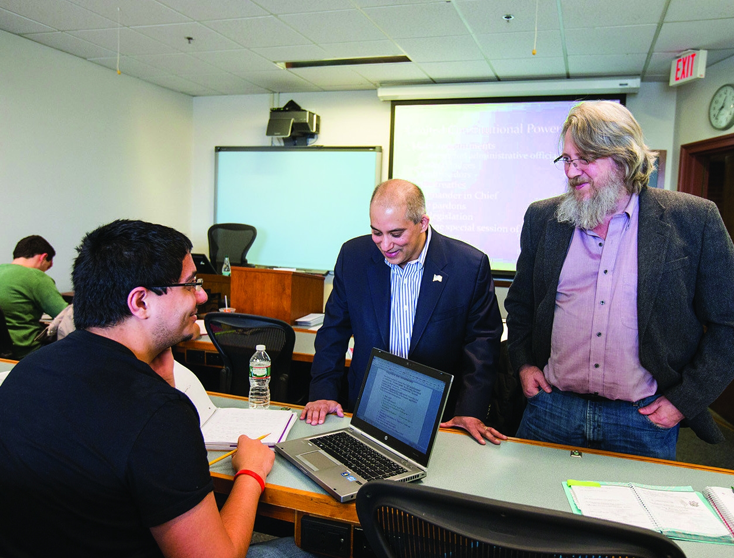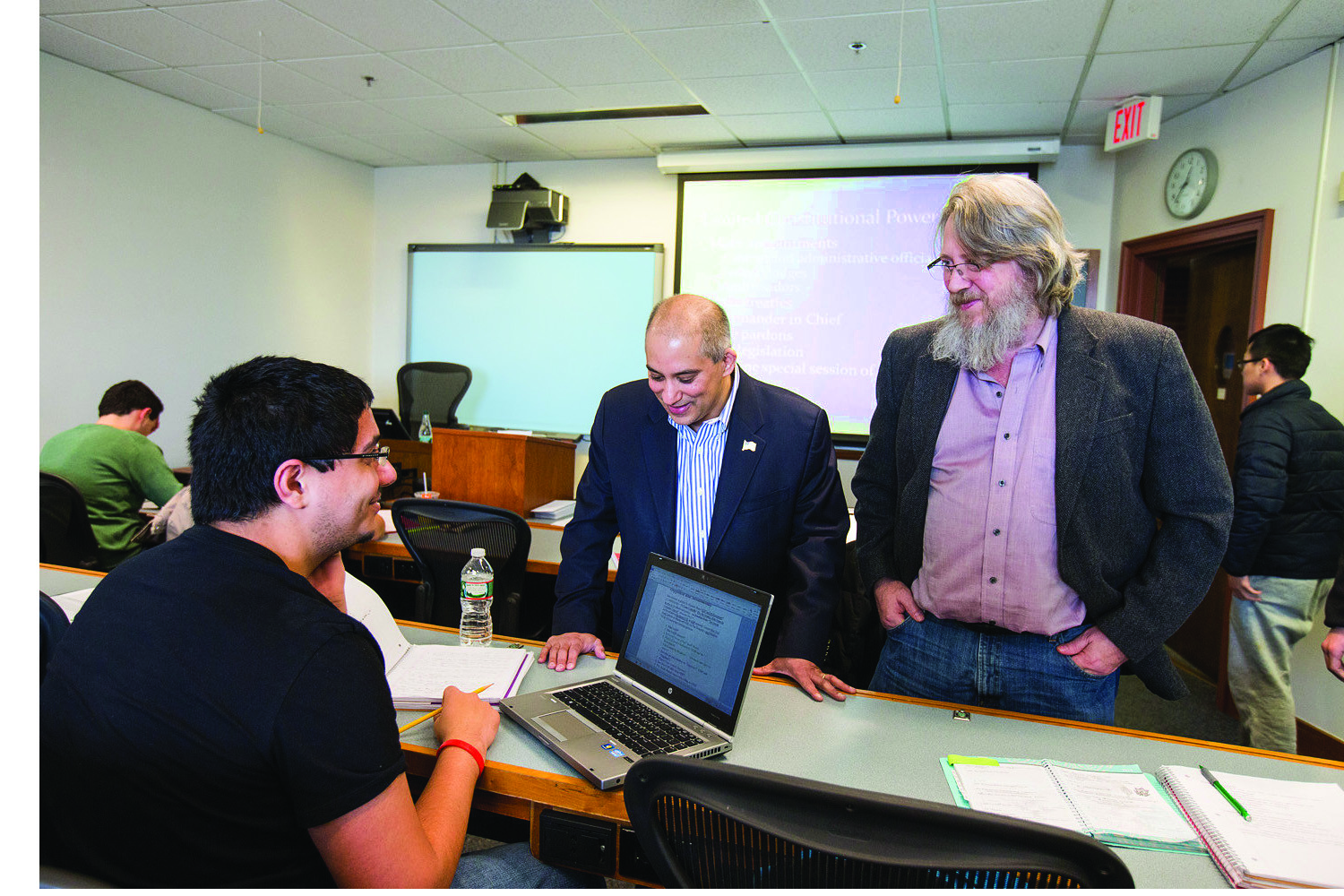
New Fusion Courses Make Unlikely Connections, Drive Creative Thinking
Unique. Interesting. Engaging. Outside the box. Those are the words being used by Bentley University students to describe new six-credit courses that make unlikely connections between business and the arts and sciences. Launched this spring, the so-called fusion courses apply an educational model that will give graduates a distinctive edge, as employers demand practical skills embedded in a liberal arts education.
One course pairs management and cinema, and another fuses macroeconomics with U.S. government and politics, with two new courses coming in fall 2014.
“The division of academic work into different departments typically results in students learning a range of separate and compartmentalized things, with little sense of how they connect,” says Professor of Management and Psychology Aaron Nurick. “In reality, the interests of different disciplines overlap and intersect in a variety of ways. These courses represent one attempt to show how this can happen.”
“The curriculum for the combined course got me really engaged because it was such a different experience,” says Economics-Finance major Michael Vecchione ’16. “Although it was more challenging to relate the material, it helped me make connections in a new light.”
Inquiring Minds
The fusion courses promote a shifting of perspectives, says Associate Dean of Business Programs Dorothy Feldmann. “Combining two different disciplines and looking at one through the lens of the other provides a more mature and better grounded perspective on business.”
The fusion courses combine two existing courses that are scheduled in back-to-back blocks with the same students. Nurick and Mike Frank, associate professor of English and Media Studies, combined their respective stand-alone courses — Interpersonal Relations in Management and Women in Film. Although the professors taught their particular course, each sat in and participated in the other to create a sense of connection and make the double block relatively seamless. The effect was one six-credit classroom experience that explores how two fields with different perspectives and goals are anchored in a shared foundation of human identity and psychoanalytic theory. The cinema dimension, for example, represents a view of culture in general: who we are and what role gender categories and movies play in shaping that. The management dimension alternatively represents strategies for effectively and fairly operating within a system of human relationships using space, language and nonverbal communication, and learning to apply specific skills of active listening and assertive expression.
“Combining two courses that at a glance seem mismatched without a doubt fostered thinking outside the box and pushed students to make connections and think in new ways,” says Christopher Figueroa ’16. “The course’s takeaway has stuck with me far more than any other course from the past semester.”
Associate Professor of Political Science Jeff Gulati joined Economics Department colleague Bryan Snyder to teach Faction and Friction: The Politics of Economic Policymaking.  According to Gulati, much of American politics today centers on disagreements over the role of the federal government. Students in the course paid special attention to issues surrounding the amount of government intervention in regard to the economy.
According to Gulati, much of American politics today centers on disagreements over the role of the federal government. Students in the course paid special attention to issues surrounding the amount of government intervention in regard to the economy.
“They developed a better understanding of the big picture and explored issues such as why policymakers sometimes make irrational economic decisions,” Gulati notes. “The answer requires that you know how a budget is put together and how various political stakeholders wield influence during that process. Courses that bridge disciplines help students learn what kinds of questions to ask.”
“If you ask a slightly different question about the same issue you might suddenly understand that issue in a new way,” adds Associate Dean of Arts and Sciences Juliet Gainsborough. “It’s partly about complicating things. The more you’re taught to be a complex thinker, the better you’re going to be at any task and the greater your ability to problem solve.”
Integrated Thinking
The new courses reject an “all or nothing” dichotomy, says Dean of Arts and Sciences Dan Everett. “The current educational model is so discipline-siloed that students approach course selection like a take-out menu: a little bit from column A and a little bit from column B and then you’re done. But by design, you don’t get a curriculum that integrates their knowledge.”
And integrated knowledge is what employers want, according to Bentley University’s preparedness research. In particular, they are looking for graduates who can make an immediate impact with their professional and technical qualifications, while also demonstrating creativity, problem-solving and interpersonal skills.
“Most problems that business students are going to encounter in the workplace are going to be multi-disciplinary, not single-focused,” Feldmann notes. “The better students understand how to bring skills and thinking from one area to another to bear on a problem, the more they will be successful.”
Kristen L. Walsh is a freelance writer.
Photo caption: Jeff Gulati (center) and Bryan Snyder (right)

